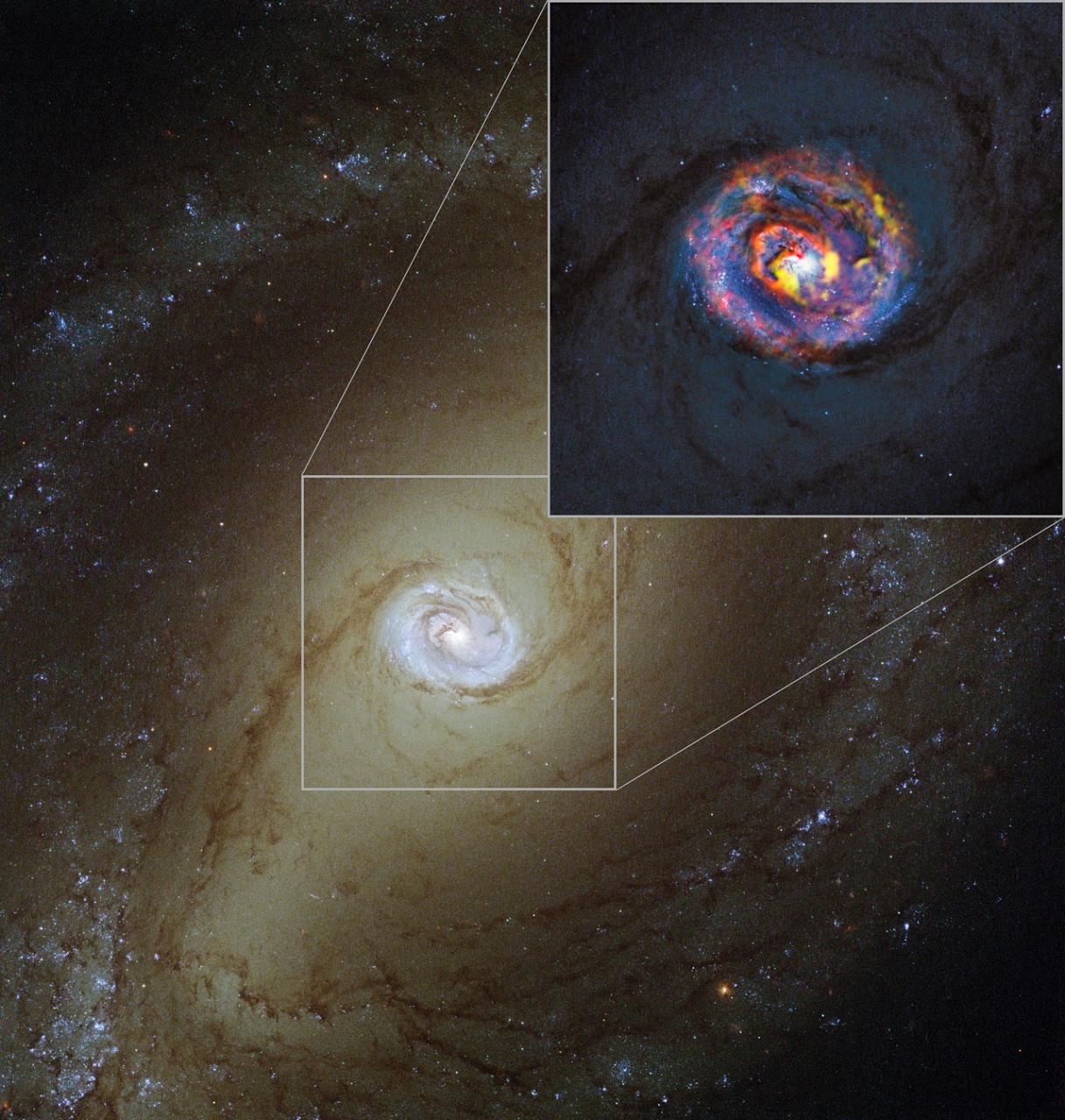Does the diet of a supermassive black hole affect the host galaxy?
Using the ALMA telescope, it has been possible to observe NGC 1433 in detail, which presents a complex system of rings, bars and spirals that guide gas toward the central supermassive black hole
Using the ALMA telescope, it has been possible to observe NGC 1433 in detail, which presents a complex system of rings, bars and spirals that guide gas toward the central supermassive black hole
Most galaxies harbour a supermassive black hole in their centre (with masses equivalent to up to billions of suns) which, by attracting surrounding gas, may trigger what is known as nuclear activity and involves a great release of energy. But how is gas conveyed to the central regions of galaxies to feed supermassive black holes? Does the growth of the black hole impinge on the evolution of the galaxy that harbours it?

An international team of astronomers has answered both questions thanks to the high resolution of the ALMA telescope. It has made detailed observations of NGC 1433, a spiral shaped galaxy with a complex configuration. Composed of two external rings and a primary bar—bar-shaped structure which hosts stars and conveys gas—it also hosts in its centre a miniature version of the features just described: a ring and a nuclear bar.
"The data from ALMA show that the gas in the central region of NGC1433 follows a spiral pattern inside the nuclear ring that would explain how the gas is conveyed toward the nucleus and feeds the nuclear activity,” says Isabel Márquez, researcher at the Institute of Astrophysics of Andalusia (IAA-CSIC) who takes part in the study.
The presence of these bars seems fundamental, as was already suggested by the NUGA (NUclei of GAlaxies) project, developed by the same research team to study the distribution of gases in active galaxies and the supply of the central black hole. The project found that the commonest supply mechanism of galaxies in their sample was a primary bar rotating slowly and a nuclear bar rotating more rapidly, so that the resulting dynamic resonances made the gas flow toward the centre. The dynamics of gases in NGC 1433 seems to confirm this scenario.
Black hole feedback
The team has also observed that part of the molecular gas, just under 10%, is ejected through a gush that springs from a region near the nucleus and ejects a mass equivalent to seven suns per annum. "Since the stellar formation processes, in some galaxies where these phenomena occur, are not very intense, we think that on NGC 1433 the active nucleus itself is responsible for this flow,” says Isabel Márquez (IAA-CSIC).
"This discovery confirms the current idea that the nuclear activity may extract the gas from the centre and put a brake on star formation. The supermassive black hole could thus regulate the growth of bulges in the centre of galaxies, which would explain the observed relationship between the mass of bulges and central black holes,” the researcher concludes.
The research, published in Astronomy & Astrophysics, has been led by Françoise Combes (Paris Observatorio) and Santiago García Burillo (National Astronomical Observatory, OAN).
Images: ALMA (ESO/NAOJ/NRAO)/NASA/ESA/F. Combes
F. Combes et al. ALMA observations of feeding and feedback in nearby Seyfert galaxies: an AGN-driven outflow in NGC 1433* http://dx.doi.org/10.1051/0004-6361/201322288
Isabel Márquez, isabel@iaa.es 958230595 // 603570590
COMUNICATION - ANDALUSIAN INSTITUTE OF ASTROPHYSIC: Silbia López de Lacalle, sll@iaa.es 958230532
